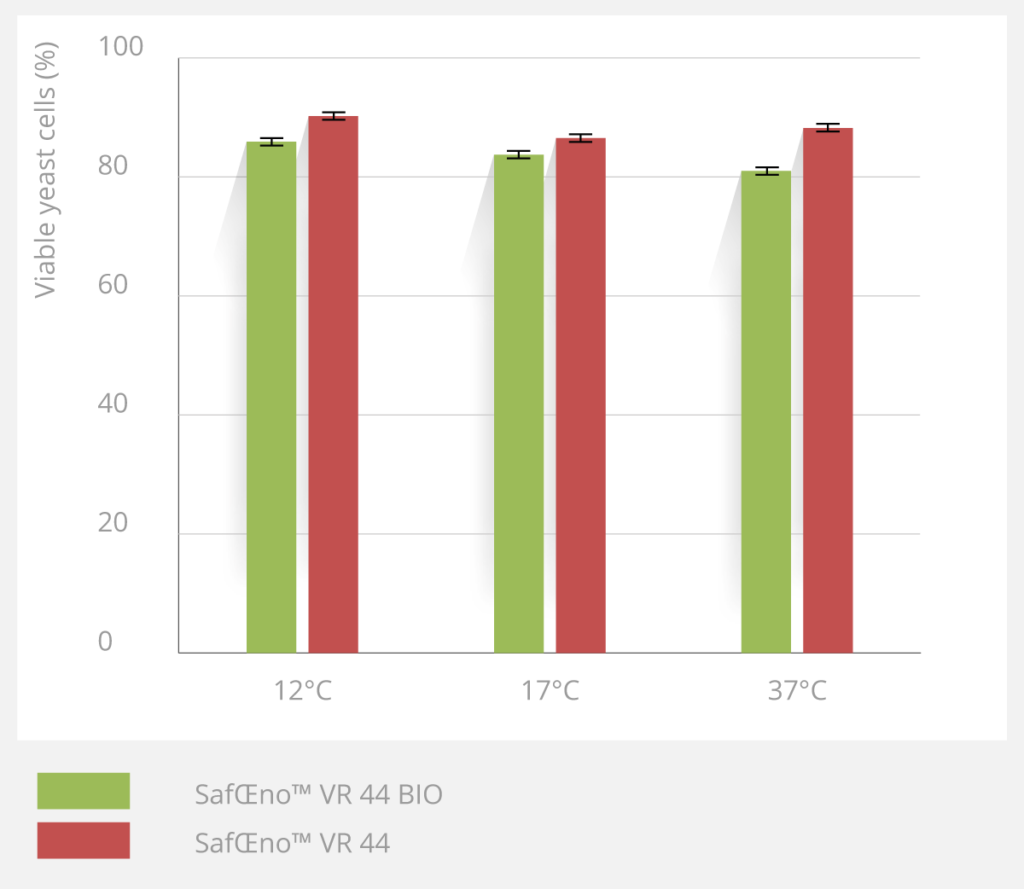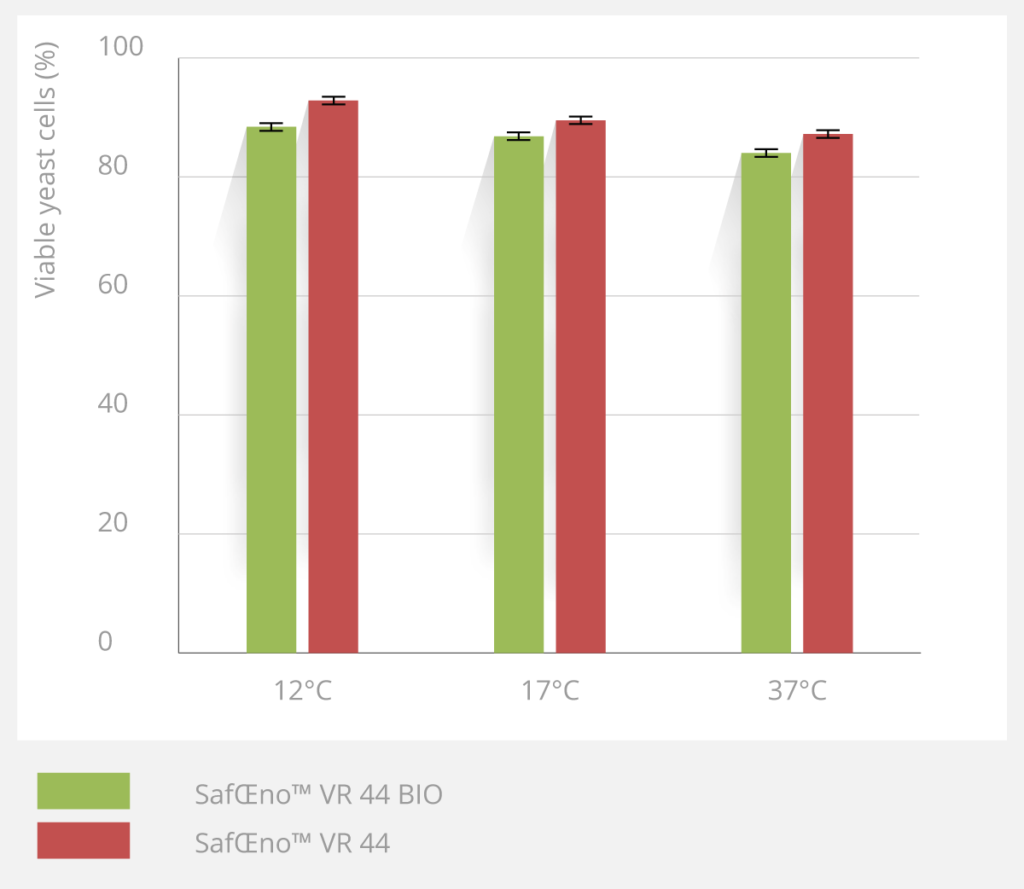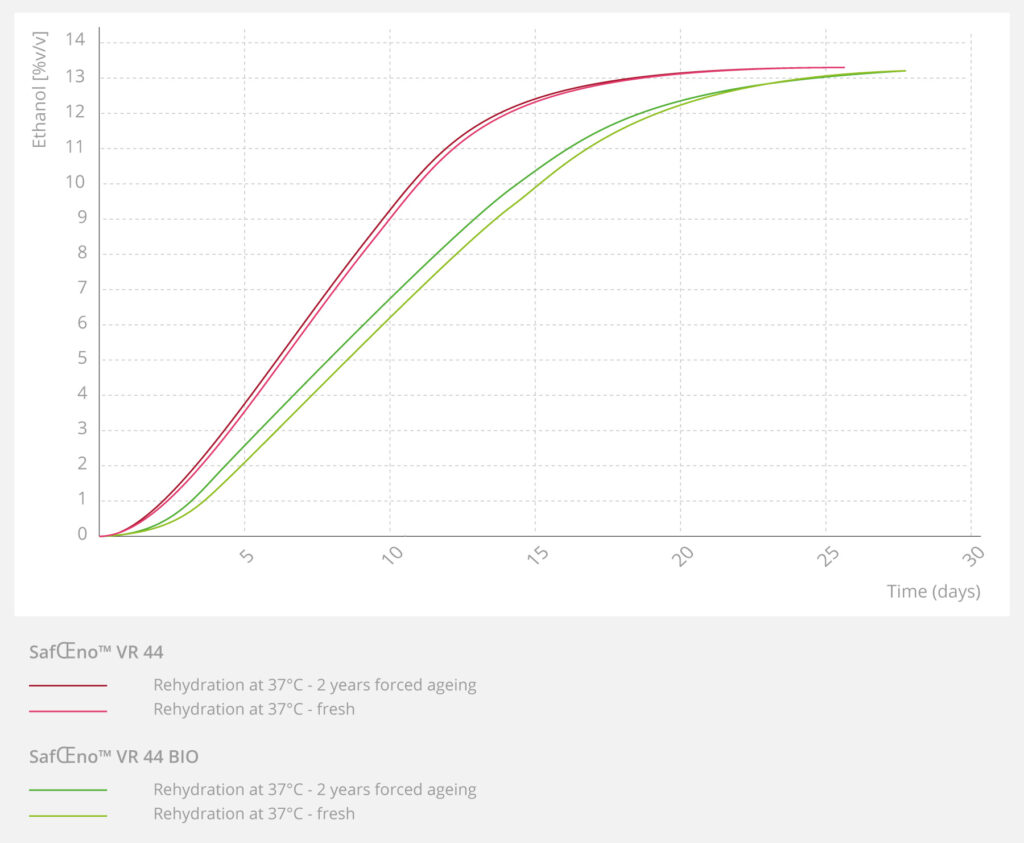
When we first started our trials with organic molasses and other organic intrants for our yeast propagation, we had no formal guarantees that the resulting yeast produced would be close to our standard range.
Differences in the way we produce our yeast can always affect performance of the product, so to make sure our organic SafŒno™ VR 44 BIO yeast was performing at the same high standards you’ve come to expect from Fermentis products, we carried out extensive comparison tests between both conventional and organic VR 44.
How did we compare the two products?
One of the most important criteria to measure is of course cell viability: is the viability of the yeast produced through an organic certified process the same as in our conventional product?
We also performed our standard yeast accelerated ageing test to make sure in time, the organic version would age in a similar way to the standard product.
Last but not least we checked yeast kinetics and compared the two products to see how fermentation performance was affected.
Of course, we were expecting a degree of difference between the two and we had already determined the extent of difference we could accept. The results we got were extremely positive and we will share them with you.
Yeast viability test results

In water
Medium agitation

In water with 10% w/w of sugars (Fructose:Glucose, 1:1)
Medium agitation

In water with 30% w/w of sugars (Fructose:Glucose, 1:1)
Medium agitation
To test the viability of SafŒno™ VR 44 BIO compared to SafŒno™ VR 44, we held trials in a series of different conditions, changing the temperature, media and agitation.
All the results were very positive, there were significant differences in cell viability considering the accuracy of the method (+/- 1%) but never more than 8% between both products in the same conditions (3% in average) and all viabilities remained high: between 80 and 90%. The graphs above show just a few extracts of the full study, in different media and at different temperatures.
Fermentation kinetics results
When we compare fermentation kinetics at 15°C on OIV synthetic medium (230g/L sugars – 13.5% potential ABV, Yeast Available Nitrogen adjusted to 185 mg/L, initial total SO2 at 50 mg/L), we notice a clear difference in the fermentation speed and general fermentation dynamics. SafŒno™ VR 44 BIO takes a little longer to start off and is always a little bit slower than the standard version.

SafŒno™ VR 44 vs SafŒno™ VR 44 BIO fermentation kinetics
However, the most important information is that the organic yeast always reaches the end of fermentation, albeit with a few days more (< 5) than the standard yeast strain and even after 2 years forced ageing.
The graph shows only two conditions of our full study using our active dry yeast strains before and after 2 years simulated forced ageing, both rehydrated in water at 37°C and pitched at 20g/hL. The delay of SafŒno™ VR 44 BIO is clearly illustrated and we also observe a bigger impact of the ageing (reverse than expected in this case!), but it is clear that both products are really stable and fermentation will be achieved one way or another without real changes in the wine final analytical profile (data not shown).




